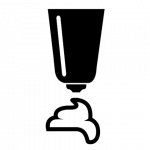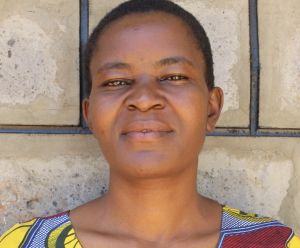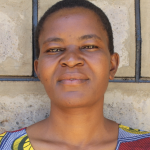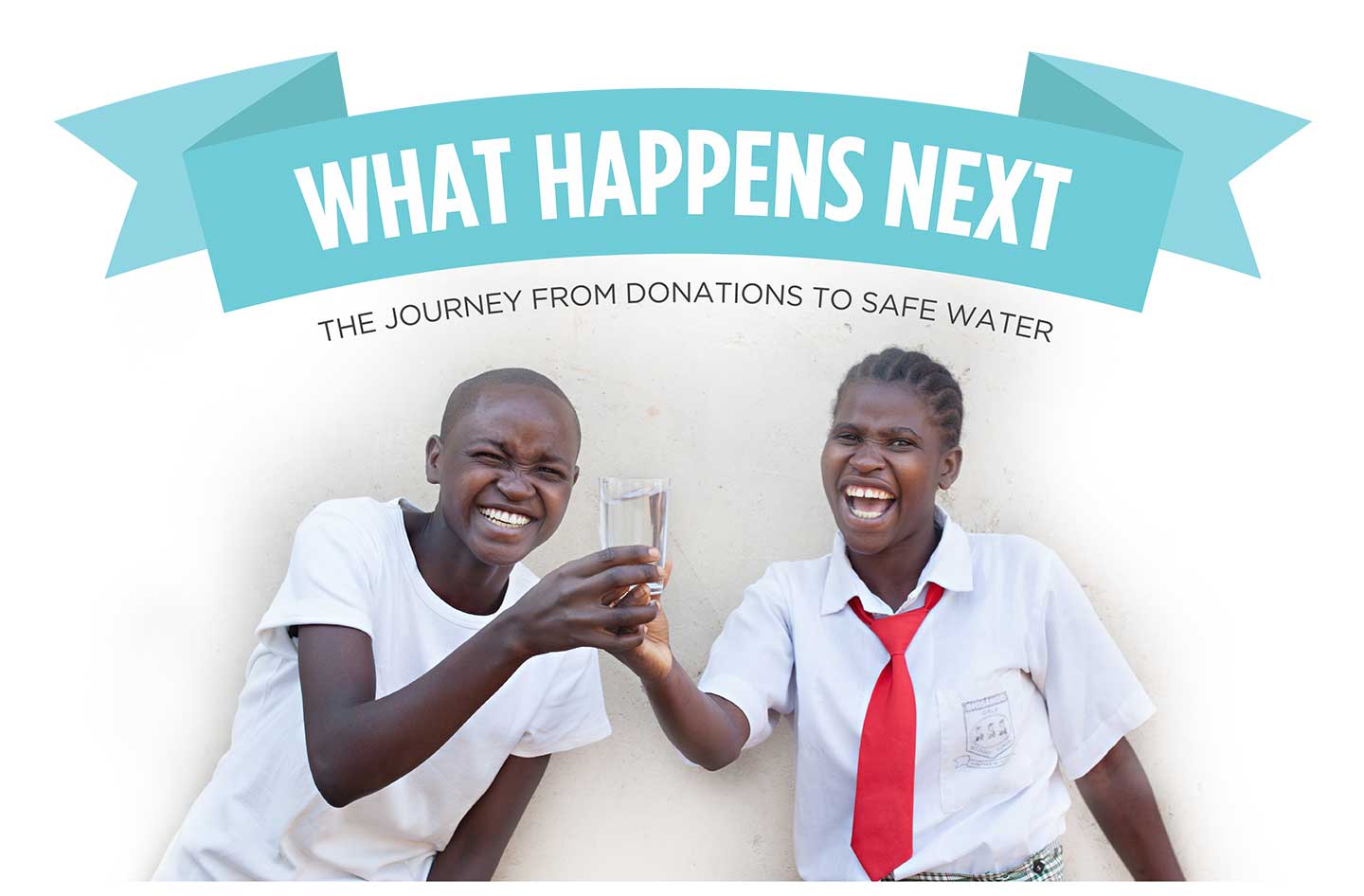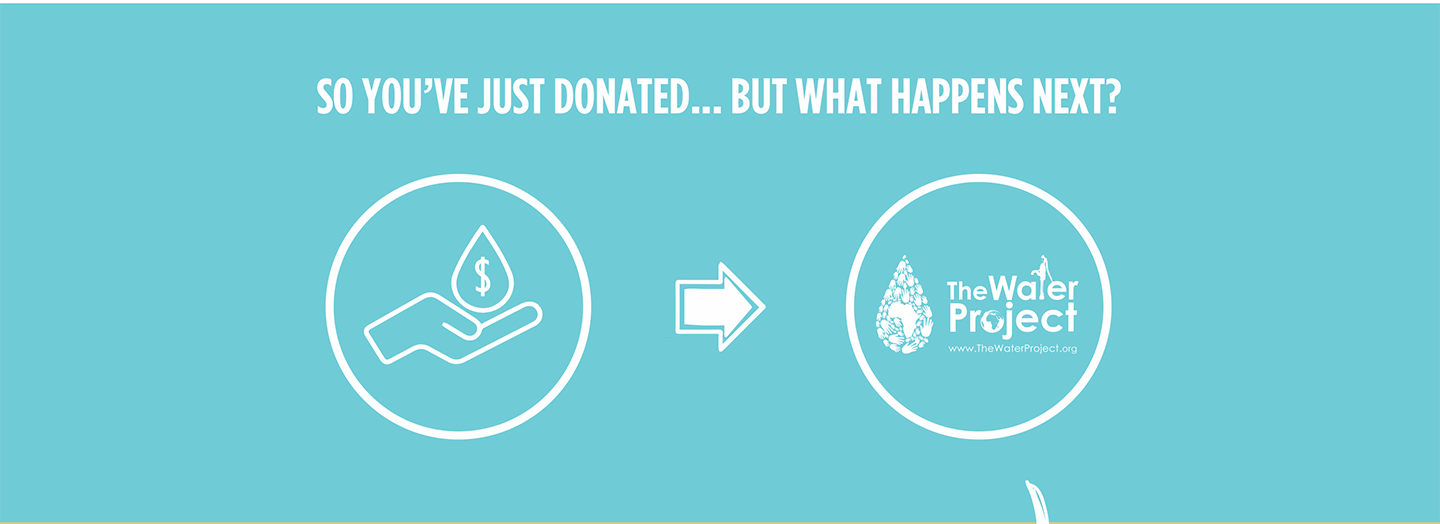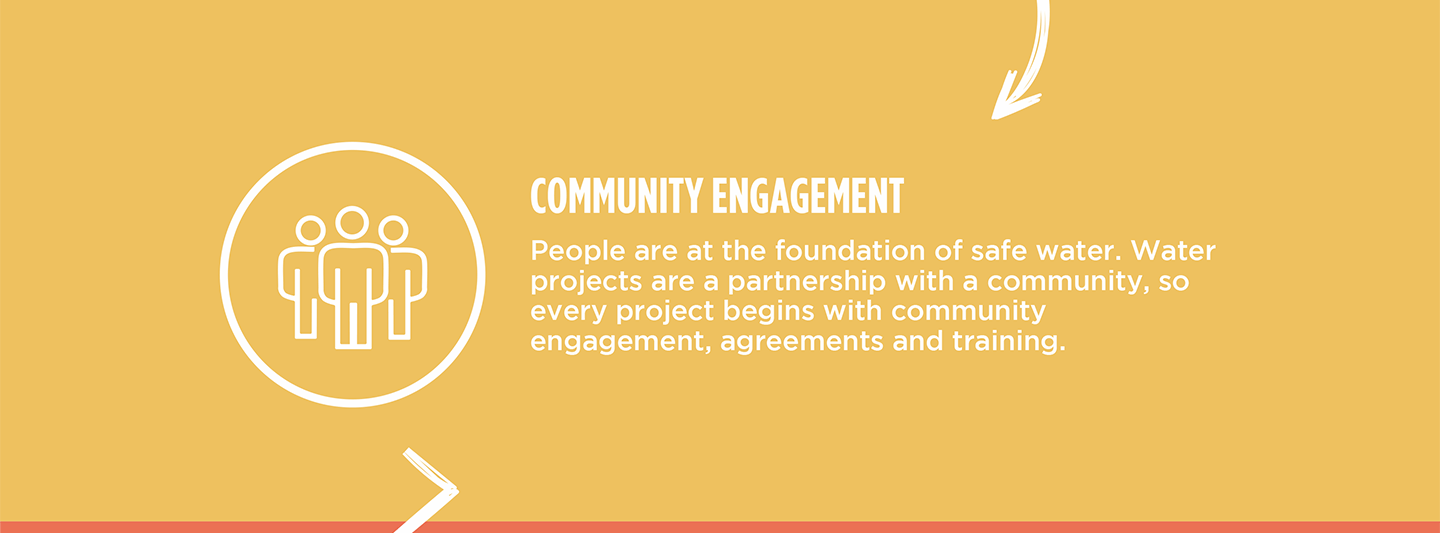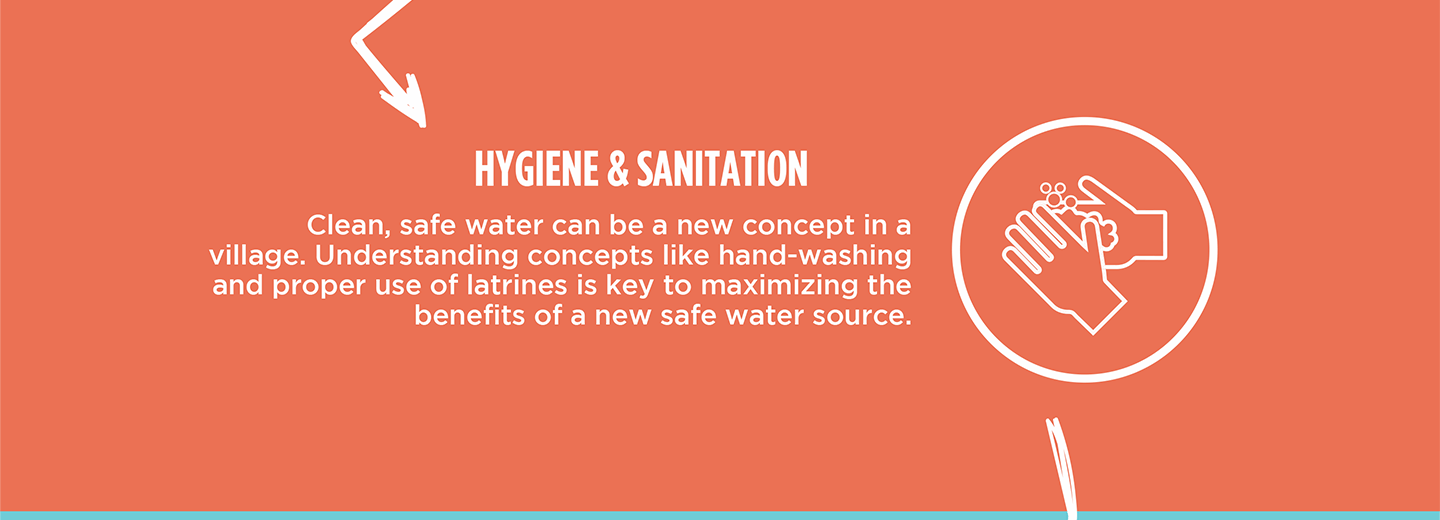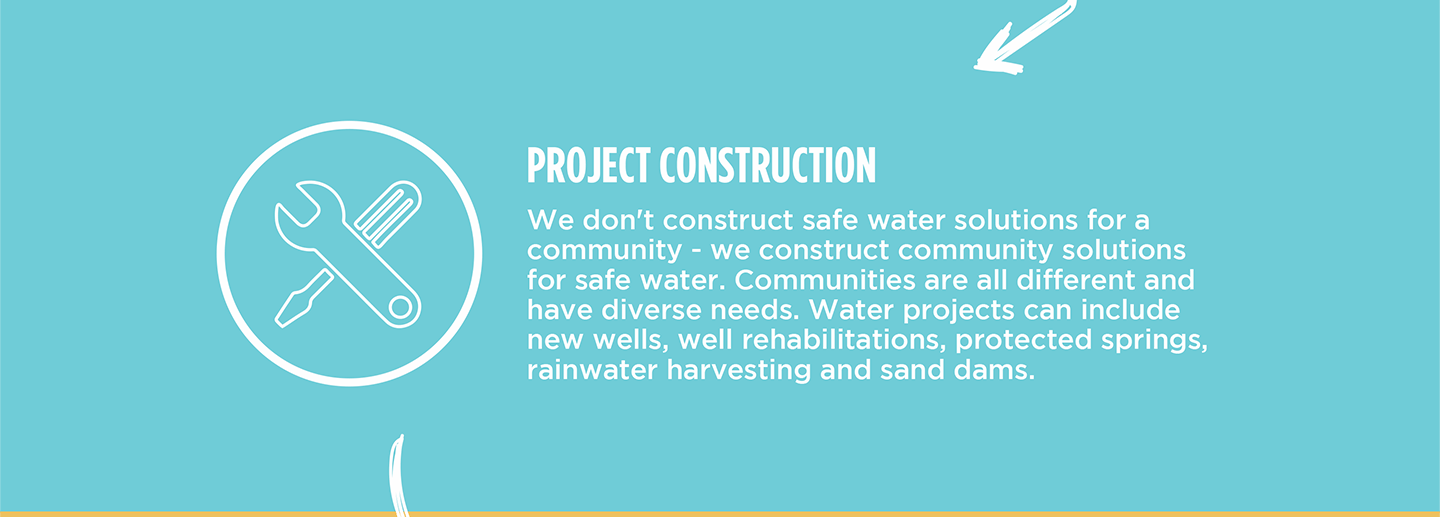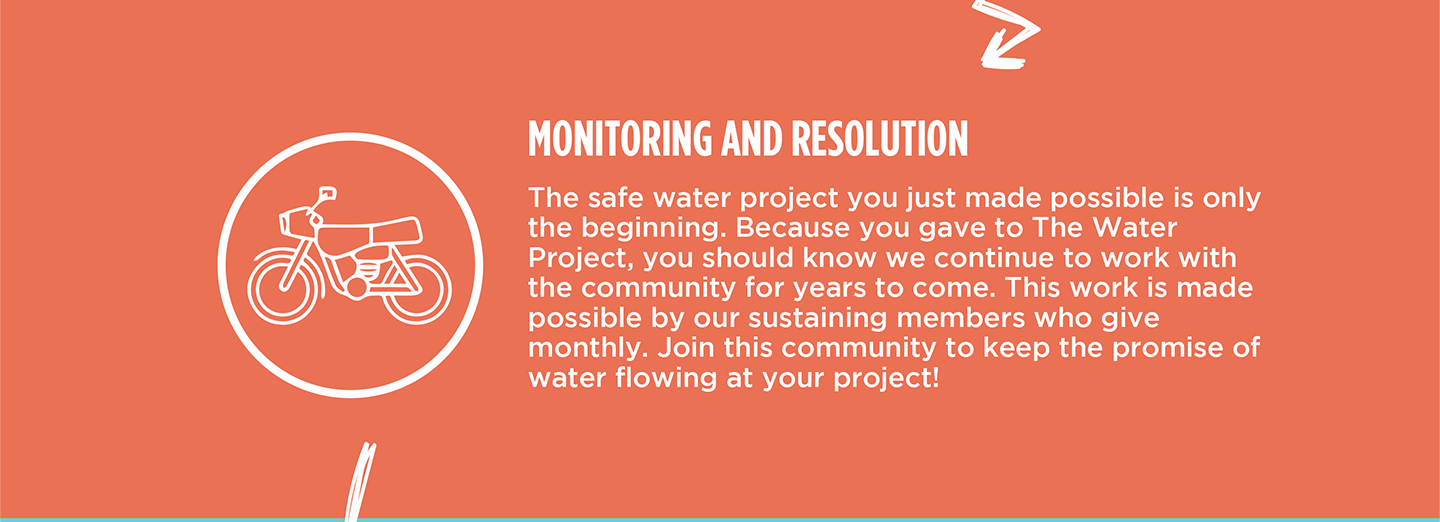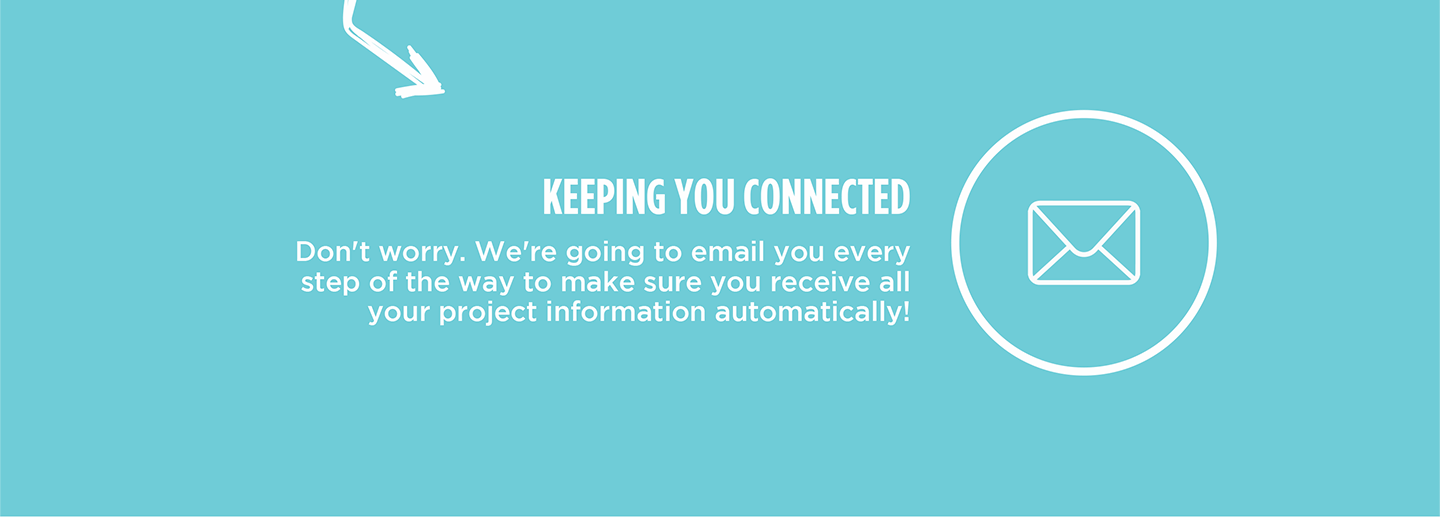The 154 community members of Makhwabuye rely on a tiny, muddy pool of water as their primary source. People must stand ankle-deep in water to catch what they can of the slow trickle from the improvised collection pipe stuck in the dirt bank above the water.
"The main source of water is open to contamination since the discharge pipe is held with mud and stones. Also, animals graze around the water source, making it more dirty. The alternative source, which is rain, is not reliable, especially during [the] dry season," said field officer Rose Serete.

Unsurprisingly, the water people collect is contaminated. When people consume it, they often become sick with water-related illnesses costing their health, energy, and resources.
"The current water situation has affected my health because I went to hospital in January and I was diagnosed with typhoid. This made me to use a lot of money on my medication," said 50-year-old farmer Josca Kimani, shown below near the water source.

But the quality of water is not the only issue. The collection process being time-consuming doesn't come close to describing it. Not only is the stream of water slowly escaping the pipe, but since people must stand in the water and place their collection containers in it, they try to wait for it to settle between turns. Understandably, it never clears completely, and valuable time is wasted, hoping it will be less risky to step into and consume if it settles.
"This has made me go to school late severely because I have to wait for some time after someone has fetched water for it to be clean again. This has led [to] time wastage causing me to have little time in my studies, leading to bad grades at school," shared 10-year-old Robinson I., seen below collecting water.

The protection of the spring will enable people like Josca to quickly collect water so they can return to their other responsibilities and drink the water without fear of becoming ill. And children like Robinson will be able to focus on learning again.
The Proposed Solution, Determined Together...
At The Water Project, everyone has a part in conversations and solutions. We operate in transparency, believing it benefits everyone. We expect reliability from one another as well as our water solutions. Everyone involved makes this possible through hard work and dedication.
In a joint discovery process, community members determine their most advantageous water solution alongside our technical experts. Read more specifics about this solution on the What We're Building tab of this project page. Then, community members lend their support by collecting needed construction materials (sometimes for months ahead of time!), providing labor alongside our artisans, sheltering and feeding the builders, and supplying additional resources.
Water Access for Everyone
This water project is one piece in a large puzzle. In Kenya, Sierra Leone, and Uganda, we're working toward complete coverage of reliable, maintained water sources that guarantee public access now and in the future within a 30-minute round trip for each community, household, school, and health center. One day, we hope to report that this has been achieved!
Training on Health, Hygiene & More
With the community's input, we've identified topics where training will increase positive health outcomes at personal, household, and community levels. We'll coordinate with them to find the best training date. Some examples of what we train communities on are:
- Improved hygiene, health, and sanitation habits
- Safe water handling, storage & treatment
- Disease prevention and proper handwashing
- Income-generation
- Community leadership, governance, & election of a water committee
- Operation and maintenance of the water point
Chlorine Dispensers
Installing chlorine dispensers is an important piece of our spring protection projects. Protecting a spring provides community members with an improved water source, but it doesn’t prevent contamination once the water is collected and stored. For example, if the water is clean and the container is dirty, the water will become contaminated.
We ensure that each chlorine dispenser is filled with diluted chlorine on a consistent schedule so that people can add pre-measured drops to each container of water they collect. That way, community members can feel even more confident in the quality of their water.






 Protected Spring
Protected Spring
 Rehabilitation Project
Rehabilitation Project




